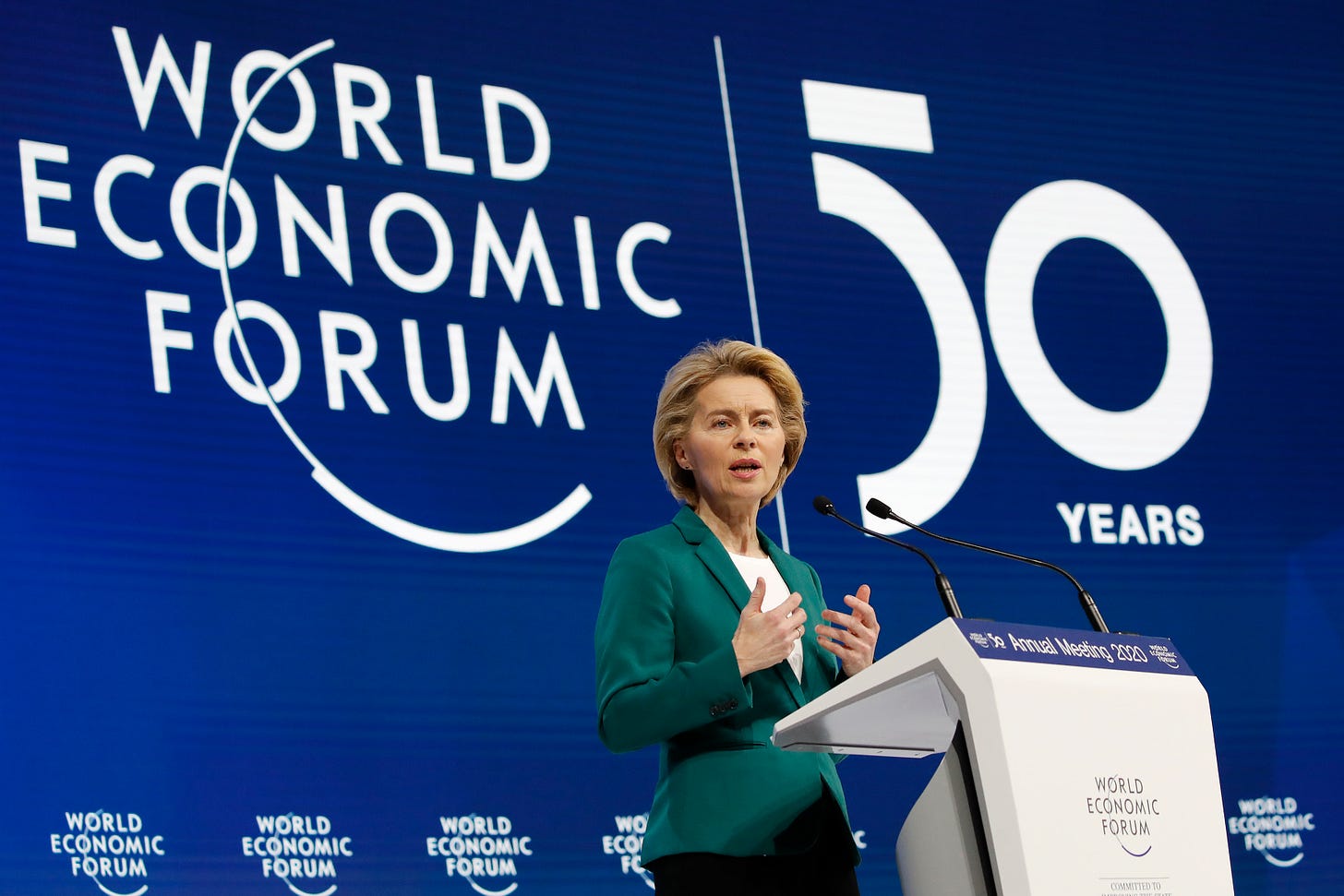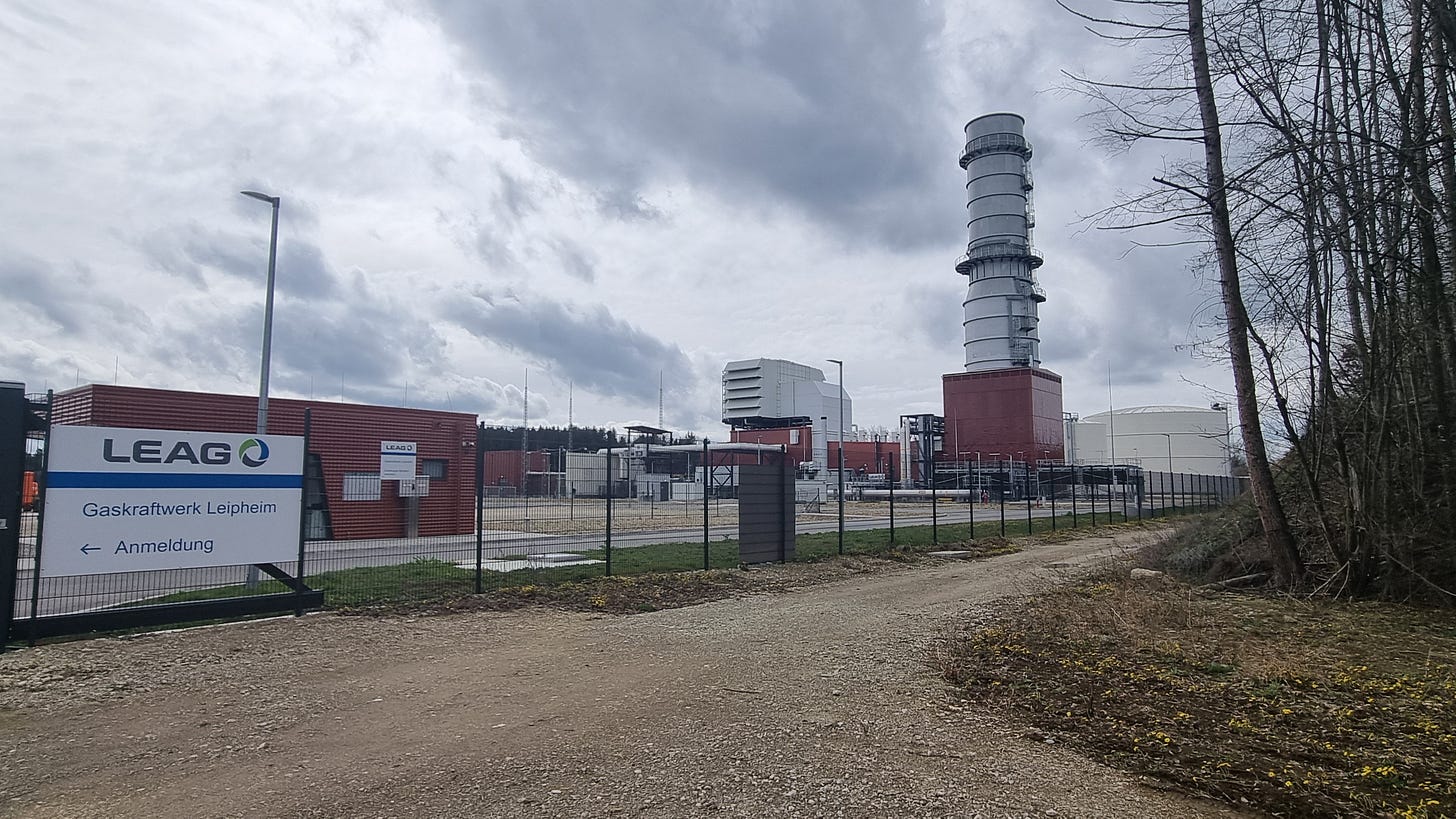🛠️ Debunking the Cheap Clean Energy Myth
The EU’s blind reliance on a flawed metric could lead to an energy affordability crisis
EU Commission President Ursula von der Leyen delivered her share of eyebrow-raising moments with her address at this week’s World Economic Forum.
Amid lofty references to quantum computing, fusion energy, and solid-state batteries, she invoked the word “clean” a dizzying 13 times—paired with “power,” “energy,” and “fuels.” An almost hypnotic mantra. Buried in the rhetorical haze was a statement that’s as catchy as it is misleading. A favorite refrain among EU policymakers:
Clean energy is the mid-term answer, because it is cheap.
While Trump has reversed Biden’s wind and solar agenda, the notion that renewables are “cheap” remains deeply entrenched within EU institutions.
After all, it kinda feels right to say they are cheap: wind and sunshine don’t come with a price tag. So, naturally, the solution must be to build more wind turbines and solar panels, right?
Let’s unpack how this narrative holds up under scrutiny.
The Hidden Costs of Clean Energy Math
The foundation of the “cheap energy” mantra lies in the so-called Levelized Cost of Energy (LCOE) calculations.
It’s the kind of metric that makes it easy to create slick charts like this one:
LCOE was introduced by financial services firm Lazard as renewable energy began gaining traction. It’s an easy-to-digest metric that appealed to policymakers, investors, and the public in recent years. But just like “fat-free” advertisements ignore sugar content, LCOE obscures the real price of integrating renewables into the grid.
Calculating it is pretty simple: it’s the total cost of building and operating a power plant—capital, maintenance, and fuel—divided by how much electricity it generates in a year. Wind and solar come out “cheap” because they skip fuel costs entirely.
However, this simplicity is misleading.
The issue with LCOE lies in the “E” — energy. Modern society doesn’t actually care about just energy; it wants power. This might seem like splitting hairs. It’s anything but. Once you understand the difference, it’s easy to see why those using LCOE to push for more renewable capacity would prefer to keep this nuance in the shadows.
Time is The Crucial Factor
Let’s start with the question of what energy is. Here’s how Wikipedia defines it:
In physics, energy is the quantitative property that must be transferred to an object in order to perform work on, or to heat, the object.
This is worth repeating: energy is the property to do work. But does that definition consider when or where that property is realized? Not at all—it deals only with the abstract potential to do work.
However, a gust of wind or sunlight hitting your roof has no value if there’s no way to use that energy at the exact moment it’s available.
If you own a refrigerator, a car, a computer, or any device that depends on energy, what you really care about is having that capacity available exactly when you need it—in most cases continuously without interruption. As a result, the value of energy cannot be separated from time.
That’s where power comes into play. Power is the rate at which energy is used—measured as the amount of work performed—over a specific period of time. The common unit for power is the watt.
As
Ammous puts it in Principles of Economics:For high-productivity machinery to function, it does not just require a low marginal cost of energy; it requires a low marginal cost of energy at all times. While the marginal cost of renewable energy fuel is indeed free when the sun is shining and the wind is blowing, when they are not, the marginal cost is infinite. No amount of capital investment will make the sun shine and the wind blow perpetually and whenever a machine is needed.
In other words, people and companies don’t just buy energy. They buy energy delivered at and for a specific time. They buy power.
It doesn’t matter if you’re running an electric arc furnace, a baby incubator, a data center, or traffic lights. Modern society is dependent on these things to work when it needs them, not just when energy happens to be available.
Sure, you could keep turning these machines on and off to match consumption with generation. But no one, whether in an industrialized society or a developing country, would consider that a future worth striving for.
And that’s why not a single country runs entirely on renewables.
The “Ugly” Underbelly of Clean Energy
Renewables are always complemented by back up power plants, like natural gas or even coal plants. Gas plants in particular can quickly ramp output up or down to match demand. These backup plants are the grid’s safety net, stepping in when the wind dies down or the sun sets.
But here’s the kicker: the costs of building, maintaining, and running these backup systems don’t get included in the LCOE for renewables. That’s a pretty big piece of the puzzle to leave out, and it makes the whole “cheap” energy claim a lot less convincing.
According to a study by the University of Technology Nuremberg and Friedrich-Alexander University, the LCOE for wind power in Germany was €ct5.49 per kilowatt-hour in 2021. However, when you factor in both battery storage and gas-fired backup, that figure climbs to €ct7.59 per kilowatt-hour—an increase that’s hard to ignore.
Net-zero advocates often pin their hopes on battery storage, but the numbers paint a much bleaker picture. The same German study shows that wind power paired with batteries pushes the cost to €ct37.75 per kilowatt-hour—a nearly sevenfold increase compared to its standalone LCOE. For solar, it’s even worse. Starting with an LCOE of just €ct4.07 per kilowatt-hour, the price with battery backup explodes to an astounding €ct99.51 per kilowatt-hour—24 times higher.
As a side note, batteries aren’t energy-dense enough to power a city through a windless night. Plus, their supply chain is carbon-intensive, manufacturing capacity is limited, and China controls much of the market for key raw materials. See
’s great article for a deep-dive.
But ignoring the inevitable backup costs isn’t the only problem with LCEO calculations.
Mispriced Energy Assets
Another big issue with LCOE is that it only looks at new power plants. It compares the cost of building new facilities but ignores how much cheaper it is to keep older plants running. Once a traditional plant is built and paid for, it’s usually less expensive to operate than building something new. By focusing only on new builds, LCOE leaves out the cost advantage of sticking with what’s already there.
And those issues are just the obvious ones. Let’s look at something far more sneaky from a 2024 study published by publicly funded Fraunhofer Institute for Solar Energy Systems.
This study compares the LCOE of renewables and nuclear energy. It assumes 2,000 full load hours for nuclear in the long run annually. However, German nuclear plants in recent years have operated at up to 8,200 full load hours annually. (For context, an entire year has 8,766 hours.) Why the discrepancy? Here’s how the authors explain it:
The study also analyzes how the LCOE depends on full load hours, given that a renewable energy-based system requires complementary flexible power plants with low full load hours
In other words, the authors artificially slash nuclear’s efficiency and shift the costs of renewables onto nuclear, making the latter look far less competitive. It’s a comparison clearly designed to spin the outcome the researchers wanted from the start.
However, all this clever number-crunching crumbles under the weight of reality:
If the claim that renewables are cheaper were true, you’d expect electricity prices for consumers to have dropped as Germany ramped up its massive buildout of wind and solar. But the opposite happened. Since 2000, electricity prices in Germany have roughly tripled, proving that the so-called “cheap” energy transition comes with a hefty price tag for consumers.

Obviously, relying on a flawed metric can also lead to the mispricing and overvaluation of green energy assets. As J.P. Morgan quoted Paul Joskow at MIT last year:
LCOE “overvalues intermittent generating technologies compared to dispatchable baseload generation”…“LCOE comparisons of baseload and intermittent, nondispatchable generation make little sense; what’s needed instead is a system-wide model rather than simplistic LCOE calculations.”
Yet, EU bureaucrats still insist that clean energy is cheap. It’s hard to say whether this is driven by malice, blind faith in their own indoctrination, or sheer intellectual laziness—perhaps a toxic mix of all three. But one thing is certain: policymakers who base their decisions on flimsy calculations like LCOE are doomed to fail. Let’s hope they won’t drag economies, industries, and taxpayers down with them.
A previous version of this article incorrectly cited the prices from the University of Technology Nuremberg and Friedrich-Alexander University study. The figures were listed in euros (€) instead of euro cents (€ct). This error has now been corrected.






Great article
100% RE is a fallacy and economic insanity.
"But one thing is certain: policymakers who base their decisions on flimsy calculations like LCOE are doomed to fail".
Why should they care, since they have no skin in the game? At worst they can get away with their scam for years, then retire with a hugely generous pension paid for by the shivering taxpayers.